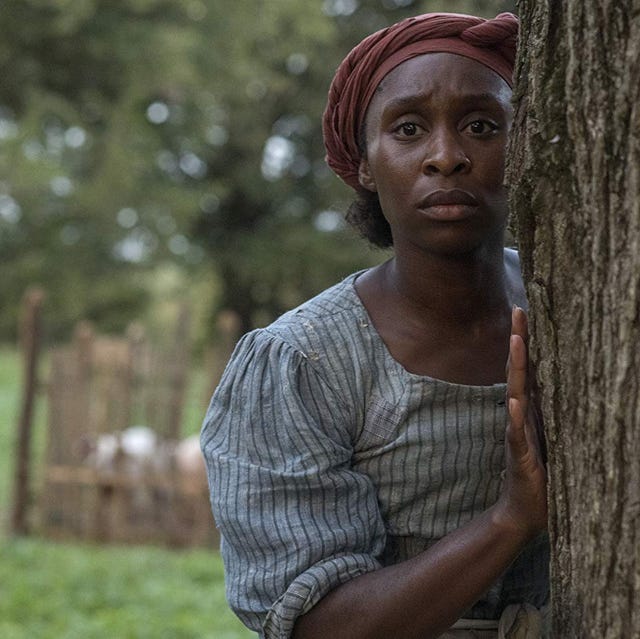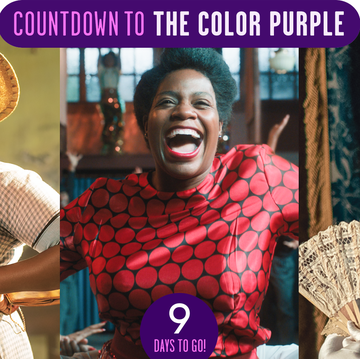- Harriet, the first film about Harriet Tubman since 1978, premiered on November 1.
- Tubman, played by Cynthia Erivo, is shown to see visions of the future.
Harriet Tubman was one of the most important figures in the American abolitionist movement, and her accomplishments are a tribute to her bravery: She led over 300 slaves to freedom as an Underground Railroad conductor, spied for the Union Army, and was the only woman to lead an armed expedition in the Civil War. Yet despite being one of the best-known freedom fighters in U.S. history, Kasi Lemmons' Harriet is the first onscreen portrayal of her life since the 1978 TV miniseries A Woman Called Moses starring Cicely Tyson. In Harriet, Broadway star Cynthia Erivo portrays Tubman as she runs away to freedom in Philadelphia and starts helping other slaves make the same perilous journey.
In telling the story of how the woman born Araminta Ross became Harriet Tubman/Moses, Lemmons and co-screenwriter Gregory Allen Howard employ a few fictionalized elements (for example, neither Joe Alwyn's Gideon Brodess nor Janelle Monae's Marie Buchanon existed in real life; they're composite characters inspired by multiple people). But there is some truth to one piece of Harriet's story that may surprise viewers: The visions that Tubman saw, which play a pivotal role in the film.
Here's what we know about those visions, and whether they held the same near-supernatural power the movie suggested they did.
Harriet Tubman did have visions.
They're also called "spells" or "vivid dreams," depending on the source. As Erivo's Tubman recounts in Harriet, they were possibly the result of a head injury sustained by a slave overseer's violence. Tubman was wounded in a way that foreshadowed her life's work: According to multiple accounts, she was trying to protect another slave.
At around 12 years old, Tubman was at a dry goods store on an errand when an overseer tried to make her help catch one of his slaves who'd gone there without permission. Tubman would not comply. As Sarah Hopkins Bradford writes in her authorized biography Harriet, the Moses of Her People, first published in 1869:
“The overseer caught up a two-pound weight from the counter and threw it at the fugitive, but it fell short and struck Harriet a stunning blow on the head. It was long before she recovered from this, and it has left her subject to a sort of stupor or lethargy at times; coming upon her in the midst of conversation, or whatever she may be doing, and throwing her into a deep slumber, from which she will presently rouse herself, and go on with her conversation or work.”
The young girl was essentially told to walk it off. Historian Erica Armstrong Dunbar tells Inside Edition that "the force of the weight literally fractured her skull,” Dunbar said. “She was bleeding profusely, she passed out and she was removed from the store. She never got medical attention—enslaved people rarely saw doctors.”
According to multiple accounts, including Dunbar's, Tubman began to see visions when she woke up from her sudden slumbers, which she thought to be visions from God. And Harriet did indeed believe that through the visions, God showed her premonitions that helped keep her and the slaves she guided safe during her trips.
Did Harriet Tubman have narcolepsy?
Again, it's impossible to say for sure, since nobody was keeping fastidious medical records for those forced into labor on slave plantations (the term "narcolepsy" was only first coined in France around the time of Harriet's injury). So there's no way to know whether Tubman's visions were a result of her taking a weight to the head, or if she actually had a neurological disorder unrelated to the incident. That hasn't stopped multiple biographies from calling Tubman narcoleptic, however.
At the very least, it's worth noting that narcolepsy's symptoms include suddenly falling asleep in the middle of tasks, and vivid hallucinations that occur upon falling asleep or waking up.
Tubman and Joan of Arc may share something in common.
Besides being young, seemingly-fearless women who became heroes, that is. When Joan of Arc was 13, she began hearing voices and seeing visions of saints, believing these visitations were ultimately messages from God. But viewed retroactively through the lens of modern medicine, Joan may have actually been experiencing the symptoms of a certain form of epilepsy.
Tubman biographer Kate Clifford Larson is among those who believe that Tubman's seizures, headaches, and visions were due to temporal lobe epilepsy induced by her head injury. But Tubman's possible epilepsy, like Joan of Arc's, is little more than educated speculation.
What we do know for sure is that Tubman accomplished an astounding amount of good work, and she did it all while living with a neurological condition.
For more stories like this, sign up for our newsletter.

Samantha Vincenty is the former senior staff writer at Oprah Daily.














